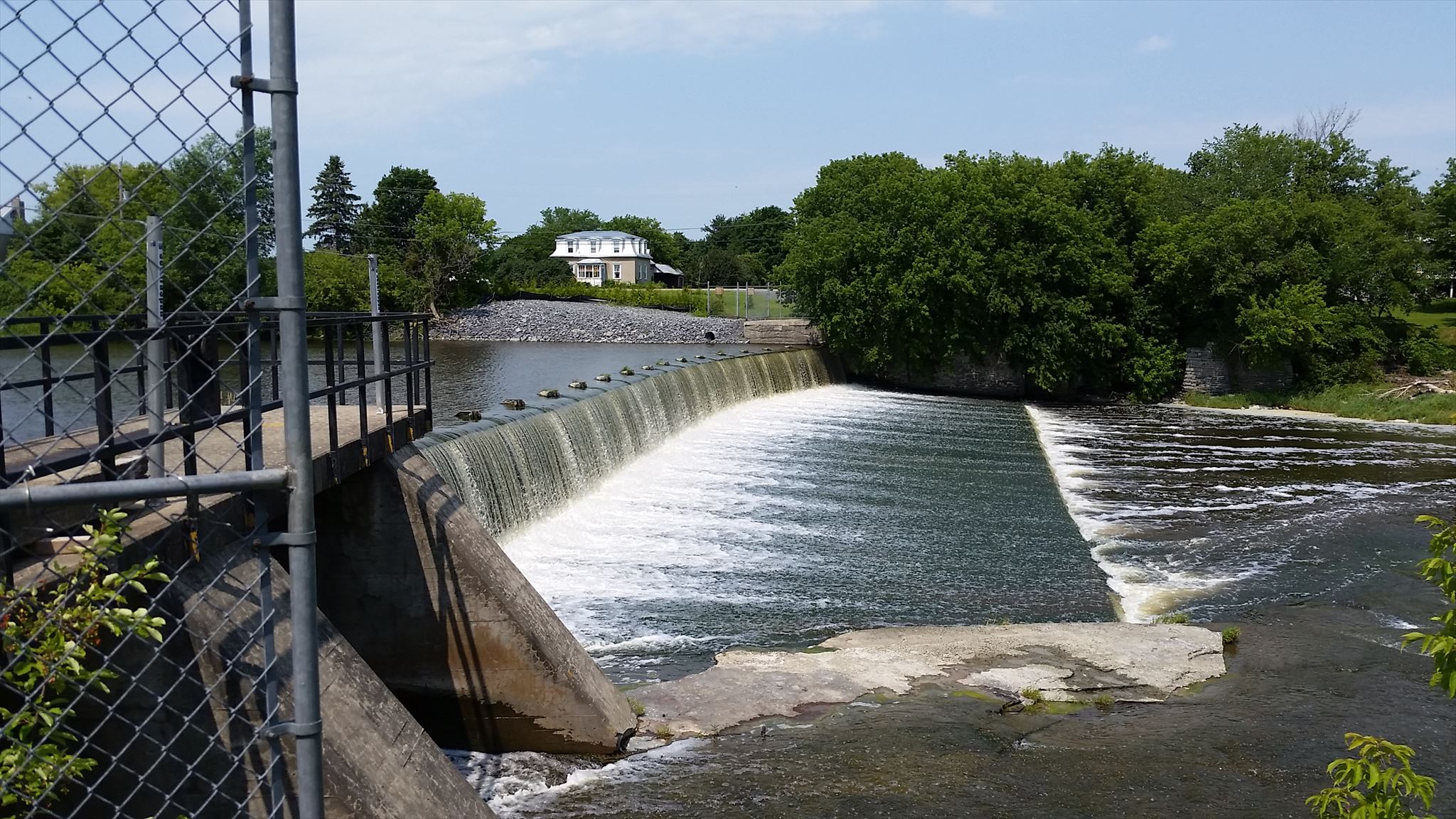This geocache is one of twenty Historical Geo-Passport geocaches within the South Nation Jurisdiction. For more information on this series of geocaches, please visit South_Nation.
You are looking for what is clearly some historical information at the posted coordinates. From there, travel the the reference points nearby and answer the remaining questions by walking along the waterfront and keeping your eyes open for information there.
N45 12.ABC W75 09.XYX
What year did Col. John Crysler begin serving in the Ontario Legislature? 18B8
Was John: Baptist (6), Anglican (9), or Catholic (3)? = C
What year was the Kenzie MacGillivray Dam dedicated (silver plaque)? Last digit + 2 = A
Keep your eyes peeled for a large map of the SNC Jurisdiction. How many Conservation Areas are listed on the map? Subtract 7 = Y
"Our playground, our..." Environment (5), Drinking Water (3), Habitat (7) = X

Histoire / History:
Le village de Crysler est nommé en l'honneur de John Crysler, reconnu pour son leadership lors de la bataille de la ferme Crysler en novembre 1813. Comme beaucoup de descendants allemands et anglais, les Crysler arrivèrent au nord du fleuve Saint-Laurent en 1776, suivant la Guerre d'indépendance américaine pour ainsi demeurer loyaux au roi George III d’Angleterre qui parlait l’allemand. John Crysler, fils de Johanned Krausler, émigra au Canada à l’âge de seize ans et se lança en affaires ; il s'enrichit en exploitant des entreprises de minoterie, de marchandisage et d’exploitation forestière. Il devint également un important propriétaire foncier, possédant plus de soixante mille acres le long du fleuve Saint-Laurent et plus au nord, incluant l’emplacement du village actuel de Crysler.
Marié trois fois et père de 19 enfants, John Crysler devint un représentant élu en 1808, siégeant jusqu’en 1824 au sein de la cinquième législature du Haut-Canada. Dans le canton de Williamsburg, il était propriétaire de la terre où la bataille de la ferme Crysler se déroula et où il servit comme colonel de milice. Ce village, qui a subi maintes inondations au cours de son histoire, n’a implanté des mesures de contrôle d’inondation que bien plus tard en 1900, lorsque le barrage de Crysler fut érigé, suivi d’une digue au milieu des années 1980. Ces deux structures appartiennent à la Conservation de la Nation Sud qui s'occupe de leur gestion.
********************
Crysler is named after Col. John Crysler, renowned for his leadership during the battle of Crysler Farm in November 1813. History tells us that the Crysler family came from the Palatinate in Germany. They were of the Lutheran religion and because of this were driven out of Germany by Louis XIV. Some members of the family went directly to the United States. John Crysler’s father (Johannes Krausler) settled in the Scoharie Valley in the colony of New York. In 1775, a skirmish of the Revolutionary War took place on that particular farm. During the American Revolution, many of these Lutherans, desiring to show their allegiance to the German-speaking King George III of England, moved to the north shore of the St. Lawrence River in 1776. John Crysler emigrated to Canada at the age of sixteen and went into business. He became wealthy by operating lumbering, milling and merchandising enterprises. He also became a large landowner, owning more than sixty thousand acres along the St. Lawrence River and further north. In Williamsburg Township he owned the land where the battle of Crysler’s Farm was fought. He also owned the land in the Township of Finch in Stormont County, where the village of Crysler is now situated. John Crysler was married 3 times and was the father of 11 sons and 8 daughters. In 1808, John Crysler succeeded in becoming an elected representative for the County of Dundas on the fifth Parliament of Upper Canada and served until 1824. He was also a Colonel in the militia, and a very prominent person in the community. He donated land in Crysler for the erection of three churches: the Roman Catholic Church, the Presbyterian Church and the Anglican Church. He was a very active and generous member of the Anglican congregation. He chose to live his final years in Crysler and is buried in the Anglican cemetery in that village. His tombstone bears the dates 1768-1852.
This village, historically plagued by flooding, didn’t implement flood control measures until much later in 1900, when the Crysler Dam was erected, later followed by a dyke in the mid 1980’s, both owned and managed by South Nation Conservation.